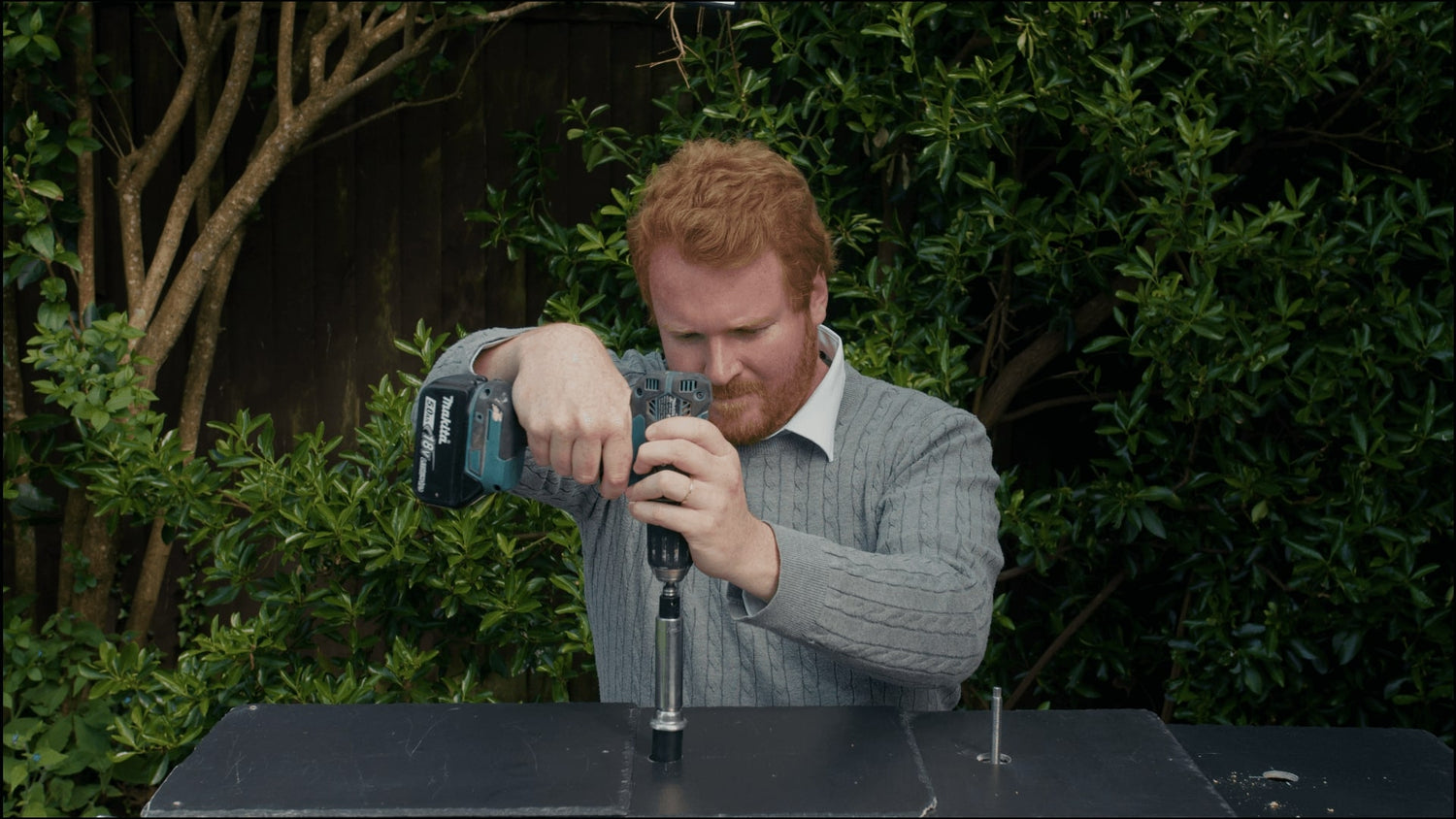
Can you install solar panels yourself?
Yes. Our unique patented mount allows for quick and easy solar installation on a wide range of roof coverings without needing expert roofers.

Is it legal to install your own solar panels in the UK?
Yes. Everyone in the UK has the right to connect to the grid and supply power. Connect & notify within 28 days for small solar panel system. Larger system will need to make a G99 application.
You do not need permission from the grid, you usually do not need planning permission, unless in a conservation area or listed building.
There is nothing preventing you from installing your own solar panels and generating your own power.
Our new patented roof mounts now make installing solar easier than ever!
No sealant, flashing or removing slates/tiles required.
Watch our installation video so see how simple our SolVe mounts make solar installation.
Simply find the rafters using a Bosch D TECT 200 (available to hire). Drill a diamond cut hole, use our pre drill guide and pre drill the rafter, fix bolt, place SolVe seal over the bolt onto the rafter, place cap on top and tighten the nut. Creating a watertight IPx8 rated seal everytime.
An IPx8 rated watertight seal ensures a durable watertight fixing and avoiding any load being pressed down on the roof covering during installation or high winds.
Planning permission is not required
Unless the solar installation is on a listed building or in a conservation zone, planning permission is not required and falls under permitted development rights.
Permission from the grid/DNO (District Network Operator)
Permission from the grid is not required to connect less than 3.68kW per phase. This means 3.68 kW for single phase and 11.04kW for three phase only require a G98 notification - letting the grid know that there is a connection. It is a requirement to tell the DNO so they are aware of a connection.
A G99 application is required for installations installing a larger inverter than 3.68 kW per phase. This has to be done in advance of your installation.
We can do either of these for you if you would prefer.
Always use a qualified electrician
You will need a qualified electrician to fit and connect the inverter to your consumer board or meter (1-2 hours labour). You will need a qualified electrician to sign it off.
It does not have to be a solar electrician - all qualified electricians will be able to connect and set up the solar inverter. Think of the inverter as another appliance in the home.
Safety first
Take into account safety when working from height or working with live cables. Identify the possible risks and use scaffolding. Wear non slip gloves when handling panels, do not touch exposed cables. Good footwear is essential as working on a slate roof can be slippery.
Slow is fast
"Measure twice...cut once" is a saying that applies well to a DIY solar installation. Ensure the rafters have been located and marked out correctly before drilling your first hole.
Use the correct tools, a 28mm diamond drill bit is essential, these have been tested numerous times to ensure a consistent watertight seal that will outlive the roof covering.
If it requires waiting a day or two for an Amazon delivery because the local Screwfix has sold out then please wait.
Connecting MC4's to your DC cables (push fit connectors)
Solar panels come pre installed with MC4 connectors so connecting panels to each other is straightforward. You will need to connect these panels (panels connected to each other are called strings) to the inverter using DC cable fitted with MC4 connectors.
The above video demonstrates how to fit MC4 connectors to the ends of your DC cable. You will need to fit two lengths of cable per string - one coming from the panels sending the current to the inverter...one going back from the inverter to the panels to complete the circuit.
Quite a satisfying thing to do yourself, you can spend time making the cable route as you would like but please spend time to do this properly and use the correct tools (it's much easier to do it right using the correct tools).
Other articles...
-
The downsides to DIY solar panel installation
Read moreThe main disadvantage to DIY solar installation is the lack of MCS certification which limits your choice of export payments.
-
Can a DIY solar panel install still be MCS certified?
Read moreNo. An MCS certified installation has to be performed by an MCS certified installer. Options are available for DIY such as Octopus no longer requiring MCS certification for export payments.
-
What does the 3.68 kW grid limit mean?
Read moreThe 3.68 kW limit relates to the AC output connected to the grid per phase before requiring permission. It does not relate to the DC capacity of the solar installation.
